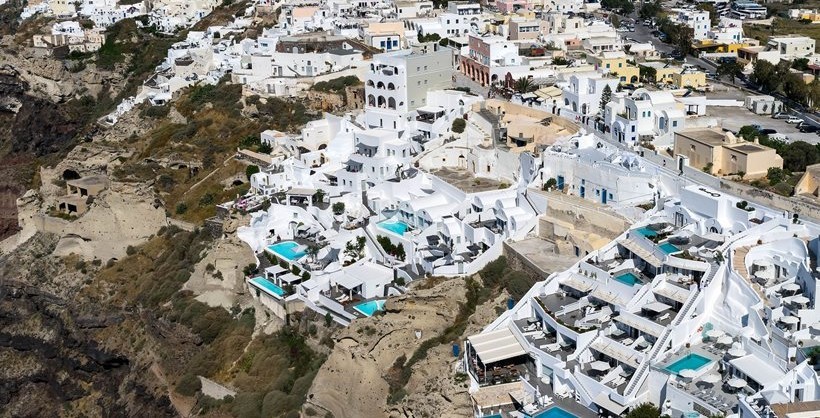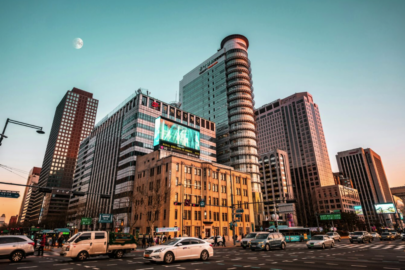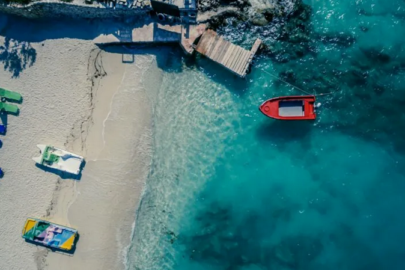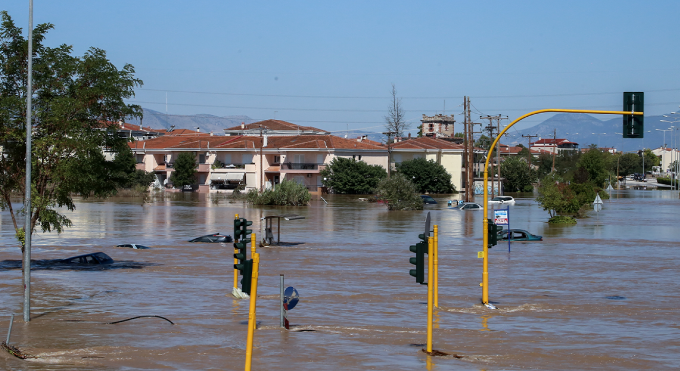Although the number of tourists who will choose Santorini for their holidays is expected to reach 2 million, with 850,000 of them arriving by cruise ships, the mayor and residents of the island are raising the alarm as beautiful island lacks key infrustructure. In a feature piece for British news site The Guardian, writer Helena Smith outlines the problems facing the locals.
Sunset on Santorini. As dusk falls, the crush begins. With the exquisite choreography of a well-honed ritual, coachloads of tourists descend on Oia, the stunning settlement perched on the island’s northern tip. Pushing their way along the village’s packed central alleyway – past shops selling luxury garments, exclusive Greek designers and Jimmy Choo shoes – they have one goal: to glimpse the flaming fireball slip into the sea.
Sunset is at the essence of Santorini’s enduring myth; the reason why the Cycladic isle of orange skies and white chalk houses is repeatedly voted Europe’s most popular destination. From the vantage point of the eateries and bars that line its clifftop rim, its success is embodied in the expensive tastes of patrons willing to pay for pricey cocktails and panoramic views. A villa hewn into the precipitous rocks overlooking its volcanic caldera can cost €5,000 (£4,600) a night. And with growing demand for the spectacular backdrop for weddings, marriage proposals and vow renewals, everyone is booked solid. It is a world away from the €1 shops patronised by struggling Greeks on the other side of the southern Aegean island.
This year close to 2 million holidaymakers will visit Santorini, lured by the beauty of a place transfigured by a volcano so great when it erupted in 1613BC it is believed to have inspired Plato’s telling of the legend of Atlantis.
Almost no other place in Greece – with the exception of party playground Mykonos – can lay claim to such success. In a country humbled by crisis – where 23% are unemployed and are often unable to pay basic utility bills – it is an achievement that other parts of the tourist-dependent country can only dream of.
Half of Santorini’s visitors will fly in on charters and private jets direct from European capitals. More than 850,000 will arrive on the gargantuan cruise ships that moor daily in the crescent-shaped isle’s volcanic sea-filled crater. “Santorini is unique,” says Konstantinos, one of the impeccably mannered waiters serving local sparkling wine on the terraces of Oia’s exclusive Fanari restaurant. “It is not Greek, it is totally international. Not more than once a week will a Greek couple, or family, stay in our villas. We all get very excited when they do.”
For the first time 141 hotels – up from 35 in 2013 – will stay open this winter, prolonging the season and ensuring local people cash in on ever-growing profits. It is a scene far removed from the gruelling 1950s, when mass migration followed a devastating earthquake that resulted in most of the island’s merchant elite fleeing to Athens. Electricity only arrived in 1974. Memories of poverty are still visceral and real.
But success has also brought suffering. Like the staggering debt load at the root of Greece’s long-running drama with bankruptcy, the tourism boom has amplified socioeconomic tensions and placed an intolerable burden on the island’s infrastructure. Behind the scenes, local people are becoming agitated.
“Our population has shot up because success has meant that everyone wants to work here,” says Nikos Zorzos, Santorini’s mayor.
“Over 25,000 people are now permanent residents. We have a birthrate of around 150 every year, probably the highest in Greece. We don’t have enough playgrounds or the corresponding infrastructure to keep apace with such development.”
Zorzos, a former school tutor, is in his second term. His visionary policies have won praise in Athens, where politicians see tourism as the antidote to the punishing terms attached to financial rescue from the eurozone and International Monetary Fund.
But the ebullient mayor cannot mask his concerns. Santorini is being transformed before his eyes. Environmental disaster beckons. Construction is such that “at least” 11% of the island has been concreted over, he says, citing a recent report by the University of the Aegean. There are more than 1,000 beds per square km, more than any other isle after Kos and Rhodes, and in a destination of only 76 sq km, more than 700 restaurants, cafes, bars and bakeries – the vast majority concentrated in Fira, the main town.
“We have reached saturation point. The pressure is too much,” he sighs, lamenting the lack of economic and environmental sustainability. “Santorini has developed the problems of a city. Our water consumption alone has gone up [by 46%]. We need desperately to increase supplies but that requires studies, which in turn require technicians and that we cannot afford.”
more at: theguardian.com

































